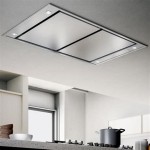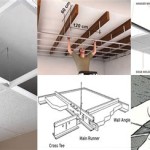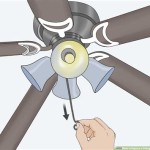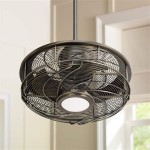Essential Aspects of Sustainable Ceiling Materials: A Comprehensive Guide
In today's eco-conscious world, sustainability is paramount in every aspect of building design. Ceilings, often overlooked, play a significant role in creating sustainable spaces. This guide will delve into the essential aspects of sustainable ceiling materials, providing valuable insights for architects, designers, and homeowners alike.
Environmental Impact
Sustainable ceiling materials prioritize minimizing environmental impact throughout their lifecycle. They should be sourced from renewable or recycled resources, reducing deforestation and waste. Look for materials that are certified by reputable organizations such as the Forest Stewardship Council (FSC) or the Green Building Certification Institute (GBCI).
Energy Efficiency
Ceiling materials can significantly influence a building's energy consumption. Opt for materials with high thermal insulation values, such as recycled cellulose or cork. These materials help maintain comfortable temperatures indoors, reducing the need for heating and cooling systems.
Acoustic Performance
Sustainable ceilings should not only be environmentally friendly but also acoustically absorbent. Sound-absorbing materials, such as acoustic panels made from recycled cotton or PET bottles, can reduce noise levels, creating a quieter and more comfortable environment.
Durability and Longevity
High-quality, sustainable ceiling materials are designed to withstand wear and tear, reducing the need for frequent replacements. Look for materials with long lifespans, such as metal or wood with durable finishes. This not only saves resources but also minimizes waste.
Indoor Air Quality
Sustainable ceilings prioritize indoor air quality by emitting low levels of volatile organic compounds (VOCs). Choose materials that have been tested and certified to meet stringent emission standards, such as low-emitting paint and glues.
Aesthetic Considerations
While sustainability is essential, aesthetic appeal is also crucial. Sustainable ceiling materials come in a wide range of styles and finishes, allowing designers to create visually stunning spaces while adhering to environmental principles.
Cost-Effectiveness
Sustainable ceiling materials may initially cost more than conventional materials. However, over the long term, their durability, energy efficiency, and reduced maintenance requirements can save money. Additionally, many sustainable materials qualify for tax incentives or green building certification credits.
Conclusion
Choosing sustainable ceiling materials is an investment in the future. By incorporating these principles into building design, we can create spaces that are both environmentally responsible and aesthetically pleasing. This guide provides a comprehensive understanding of the essential aspects of sustainable ceiling materials, empowering architects, designers, and homeowners to make informed decisions that contribute to a greener and healthier built environment.

Ceiling Tiles That Ll Make You Look Up A Comprehensive Guide To Knauf Amf Range

Maximizing Energy Efficiency Through Layering And Ceiling Design A Comprehensive Guide To Sustainable Building Practices

Suspended Ceiling Mineral Fiber Ceilings Armstrong Residential

Suspended Ceilings Vs Exposed Comparison Overview

What Are The Types Of Ceiling Materials Fall Ceilings

Furniture Trends In 2024 A Comprehensive Guide For Buyers And Design Enthusiasts Source Of Asia

7 Benefits Of Using Plywood For Your Ceiling Fa Mitc

Decorative Ceilings Armstrong Residential

Woodworks Grille Classics Ceiling Panels Armstrong Solutions Commercial

Suspended Ceilings And Ceiling Finishes The Green Guide To Specification Wiley Library
Related Posts








